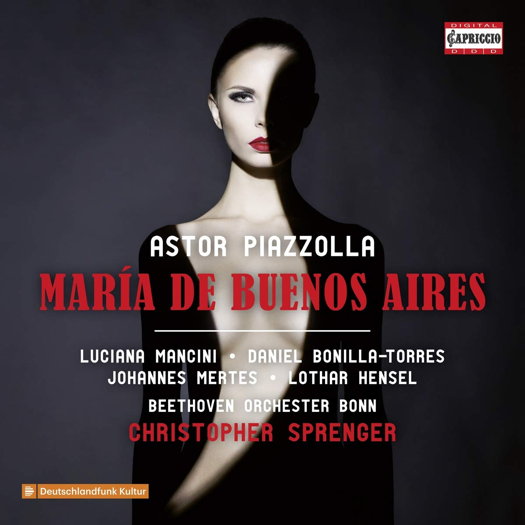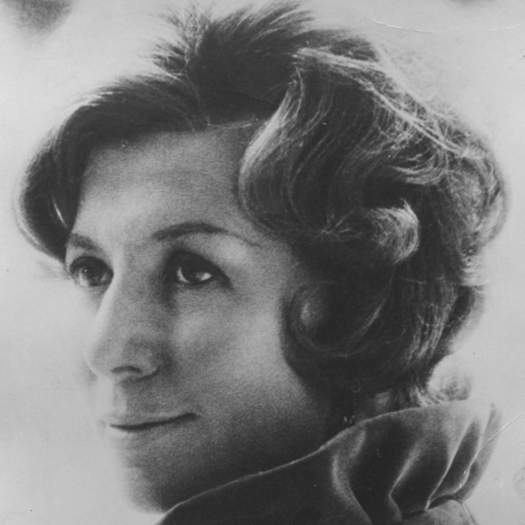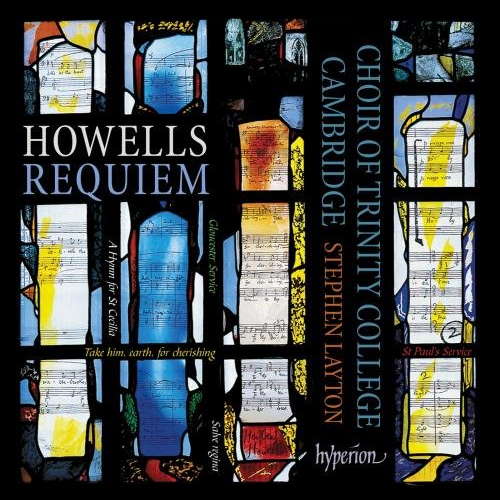- Adolf Hitler
- Jan Stulen
- Aulis Sallinen
- Jacques Castérède
- Dante
- Napoli
- Yehudi Menuhin School
- Paru River

The Spirit of Tango
Piazzolla's 'María de Buenos Aires',
recommended by GERALD FENECH
'Bouncy yet thought-provoking stuff.'
Arguably Argentina's most important composer of the twentieth century, Astor Piazzolla (1921-1992) was in fact of Italian origin. The only child of Italian immigrants the young Astor grew up in Mar del Plata. In 1925 the boy moved with his family to New York City, which in those days was prone to much violence, especially in the neighbourhoods. His parents worked for long hours and the future composer soon learned to take care of himself on the streets, despite having a limp. At home he would listen to his father's records of the tango and jazz, and soon enough he was also exposed to classical music, including Bach.
He began to play the bandoneon after his father spotted one in a New York pawn shop in 1929, and in no time he tried his hand at composition. In 1932 Piazzolla wrote his first tango, 'La Catinga', and following further tuition with Bela Wilda, a student of Rachmaninov, he was lucky enough to meet, in 1932, Carlos Gardel, one of the most important figures in tango history. Following this stroke of good fortune Piazzolla's career took off with a bang.
During his life, the composer embarked on many a travel and his ability as performer and composer was also held in high esteem. By the time of his demise in 1992, he managed to rise to the very top of his country's musical establishment, and he left for posterity a huge amount of works including tango and jazz compositions and a wealth of film scores - 48 in all. He also wrote works for the stage, the most famous of which is María de Buenos Aires.
Listen — Piazzolla: Tema de María (María de Buenos Aires)
(CD1 track 2, 0:48-1:39) © 2016 Deutschlandradio, 2019 Capriccio :
Indeed, this piece occupies a special place in Piazzolla's output, as it is the culmination of his genius, and is in many ways unique, as it invites each one of us to show his or her better self.
Listen — Piazzolla: Yo soy María (María de Buenos Aires)
(CD1 track 4, 0:07-1:03) © 2016 Deutschlandradio, 2019 Capriccio :
But who is María? The librettist Horacio Ferrer gives us the answer. He says that she is the representation of Buenos Aires, embodying the spirit of tango itself. It lies outside any known genre and was composed not to be understood but to create emotion and atmosphere, the text in particular.
Listen — Piazzolla: Aria de los analistas (María de Buenos Aires)
(CD2 track 4, 1:04-2:01) © 2016 Deutschlandradio, 2019 Capriccio :
The last major recording was way back in the 1980s, but in recent times one has been able to choose from four versions, the most notable being the one under review. Beautifully executed and sumptuously recorded, this album is undoubtedly a leading contender, and if you want to be entertained by both the sacred and profane, then do not miss out.
Listen — Piazzolla: Allegro tangabile (María de Buenos Aires)
(CD2 track 6, 2:03-2:58) © 2016 Deutschlandradio, 2019 Capriccio :
Bouncy yet thought-provoking stuff.
Copyright © 16 May 2019
Gerald Fenech,
Gzira, Malta





